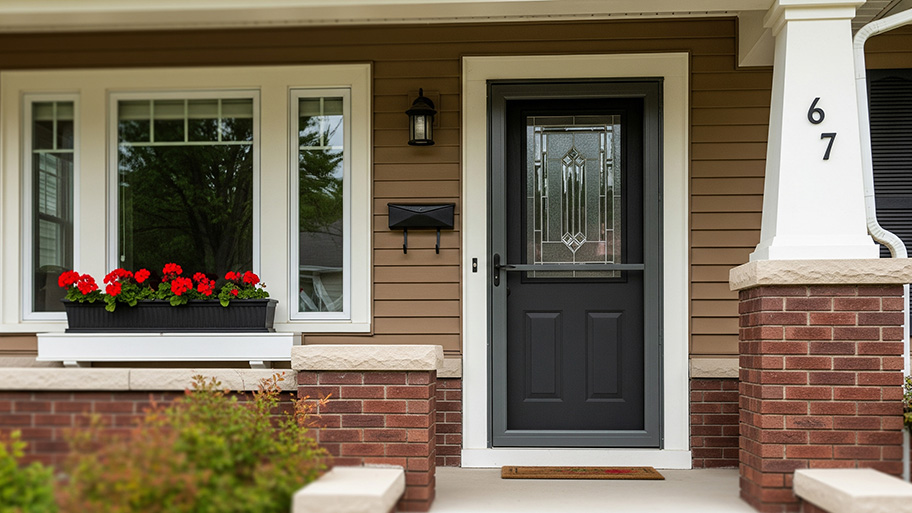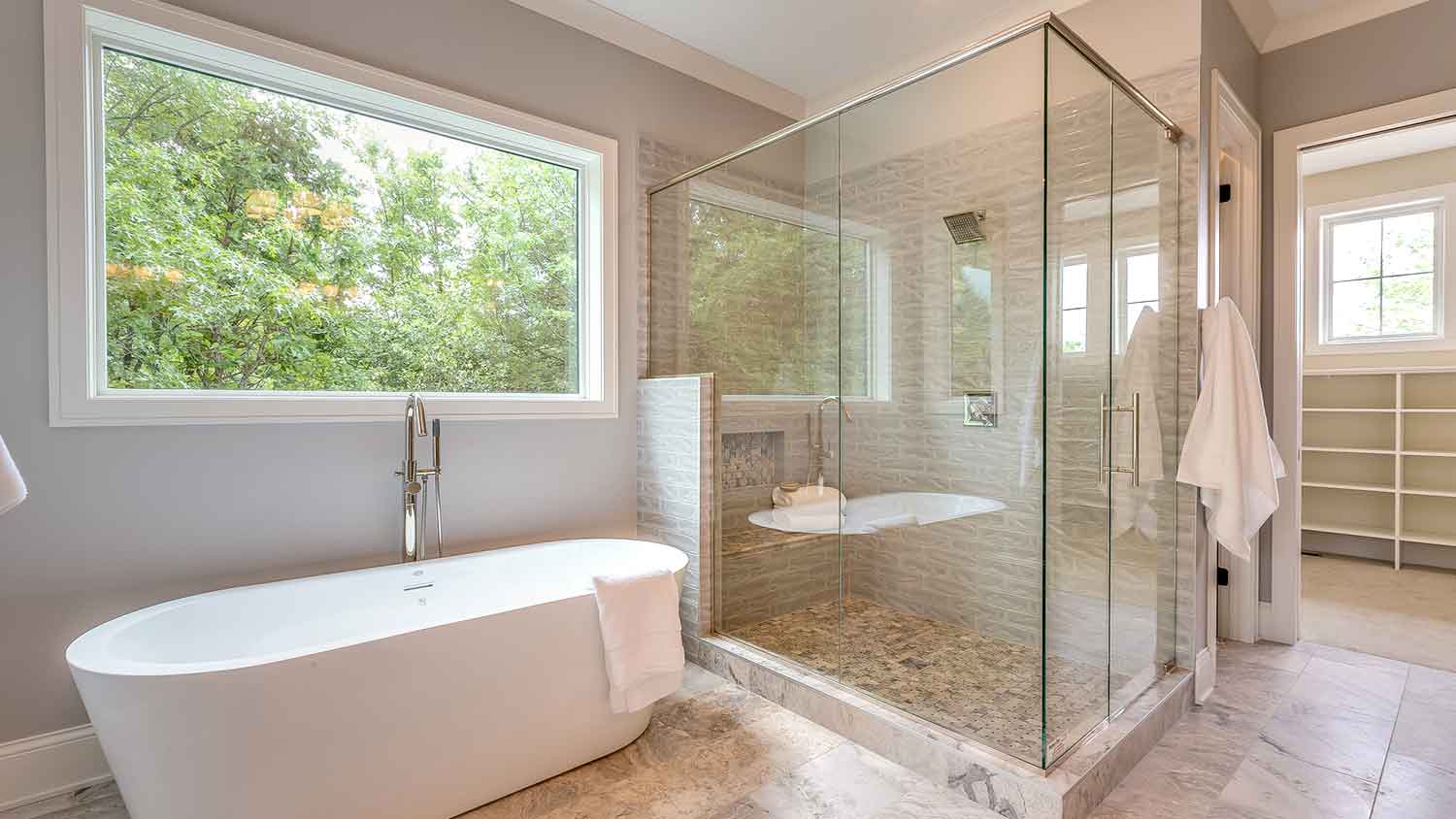
A storm door can protect your front door and let in more fresh air. Find out how much storm door installation costs for materials, labor, and more.
It’s a real shim when your door isn’t perfectly plumb


Whether you’re installing a new door in your home or fixing a sagging door or one that isn’t opening and closing smoothly, door shims are going to become your new best friend. Shims are super affordable but have a massive impact on how your doors fit into your wall opening and function. In this guide, we’ll discuss how to shim a door the right way to get you installing doors like a professional in no time at all.
Complex, high-risk projects demand more than typical DIY projects. They require time, specialized tools, and trained expertise to make sure the job is done safely and correctly. We made it easy for you to find a local pro—with our skilled network, you'll get the job done without the stress of doing it yourself or significant safety risks.
Shimming a door is a pretty straightforward job, but you do need to make sure you have the right kinds of shims before you get started. For most residential applications, you can use wood or plastic shims, which you can pick up for just a few dollars online or at your local home improvement store.
If you’re shimming a fire-rated door—you might have one leading into your boiler room or your garage, especially if you have solar batteries or an oil tank in there—then you should opt for metal shims, which are non-combustible.
If you’re removing a door and installing a new one in your home, you should first get the new door frame centered in your rough wall opening using shims.
Start by getting the door roughly centered in your opening with the door closed. Depending on how your wall opening is framed, you should have anywhere from 1/4 of an inch to 1 inch of space on all sides of the door frame. Once your door is in place, insert shims loosely around the edges to hold it there.
Always use shims in pairs. It might be tempting to push a single shim into a gap, but since shims are angled, doing so will cause warping in your door frame over time. Instead, use two shims facing in opposite directions to create a perfectly flat but adjustable spacing. Aim for shims behind each door hinge and at the bottom and top of each stile. You can add more to the top and middle of the lock stile for additional stability, but it’s not necessary.

Hold your level up against your hinges with the door closed. If they’re perfectly level, you can move on to the next step. In most cases, the door won’t be perfectly level, so you’ll need to make adjustments. This is especially true if you’re using this guide to fix a sagging door.
Where you make adjustments will depend on how your door is sitting in the wall opening. Make adjustments on the hinge side only, if possible.
If the top of your door on the hinge side is too far toward the wall framing, lightly hammer in the shims behind your top hinge.
If the bottom of your door on the hinge side is too far toward the wall framing, lightly hammer in the shims behind your bottom hinge.
Once you’ve made adjustments, check again to make sure the door is plumb.
Now that your door is plumb, you can adjust the shims on the hinge side of the door to get the spacing right and tighten the door inside the wall opening. Start with the top shim, and don’t hammer in the shims so much that your door shifts. Try to get the spacing on your hinge side about equal to the spacing on the opposite side.
Start at the top hinge, then work down the hinges, and finally tighten the shims at the top and bottom of the door.

Follow the same process on the lock side, and try to get equal spacing on both sides of the door. Again, don’t hammer your shims too far, or you’ll risk pushing your door frame out of alignment.
Start at the top of the lock side and work your way down.
If you placed shims above your header, gently hammer those in to snug up the shims. Driving them in too much will cause the header to bow downward, and it could cause issues with the door’s functionality.

Finally, drive screws or finish nails through the door frame, through the shims, and into the framing around it to secure the door in place. You should at least add nails or screws through the shims behind each hinge and on the top and bottom set of shims on the lock side of the door.
For a more professional and finished appearance, cover the screw or nail heads with wood filler and paint over it. You can also counter-sink your screws to hide the heads better.
Shimming a door is a fairly inexpensive DIY project. You only have to pay for the shims themselves, which cost anywhere from $1.50 to $10 per pack. If this is something you do regularly, you can get over 200 shims for $25. If you’re crafty and have a jig, you can even make your own shims for free from scrap lumber, bringing the overall cost down to literally nothing.
Shimming a door is a simple process that you can most likely handle on your own. The same is true if you’re installing a new prehung door or fixing an existing door that has shifted or warped over time.
Buying the shims and doing the work yourself will likely cost you between $5 and $10, whereas you’d spend an average of $100 if you hired a door installer near you to do the shimming professionally. That means an average savings of around $90 on the cost of a door installation, and the process is relatively straightforward.
However, if you don’t have the time to shim your door or you’ve tried to do the work but can’t seem to get your door centered, plumb, and level, you can always call in an expert for help.
Based on data from Angi, 52% of homeowners need additional carpentry work when repairing a door jamb. If you’re not sure if you need more work, you’re not alone, as another 23% of homeowners wanted a recommendation from a professional.
From average costs to expert advice, get all the answers you need to get your job done.

A storm door can protect your front door and let in more fresh air. Find out how much storm door installation costs for materials, labor, and more.

Sprucing up the barn or adding a rustic touch to your home? Use this guide to estimate barn door installation costs, so you can budget for your next project.

Find out the average shower door repair cost, key price factors, and ways to save. Get estimates to plan your shower door repair project confidently.

If your storm door doesn’t shut properly, loose screws or damaged weatherstripping might be to blame. Learn how to fix a gap between a storm door and frame.

When a timely fix is required, knowing your home's door manufacturer for replacement parts can ensure a perfect fit. Here are four ways to identify the door manufacturer and get the parts you need.

Squeaky doors are something we’ve all heard before, and it’s irritating every time. Use this guide to learn how to fix a squeaky door–your nerves will thank you.